March 24th, 2020
8minute read
During the late 1920s, while U.S.
This work began to bear fruit during the 1930 rifle competition.
In mid-1935, Simonovs design took an important step forward.
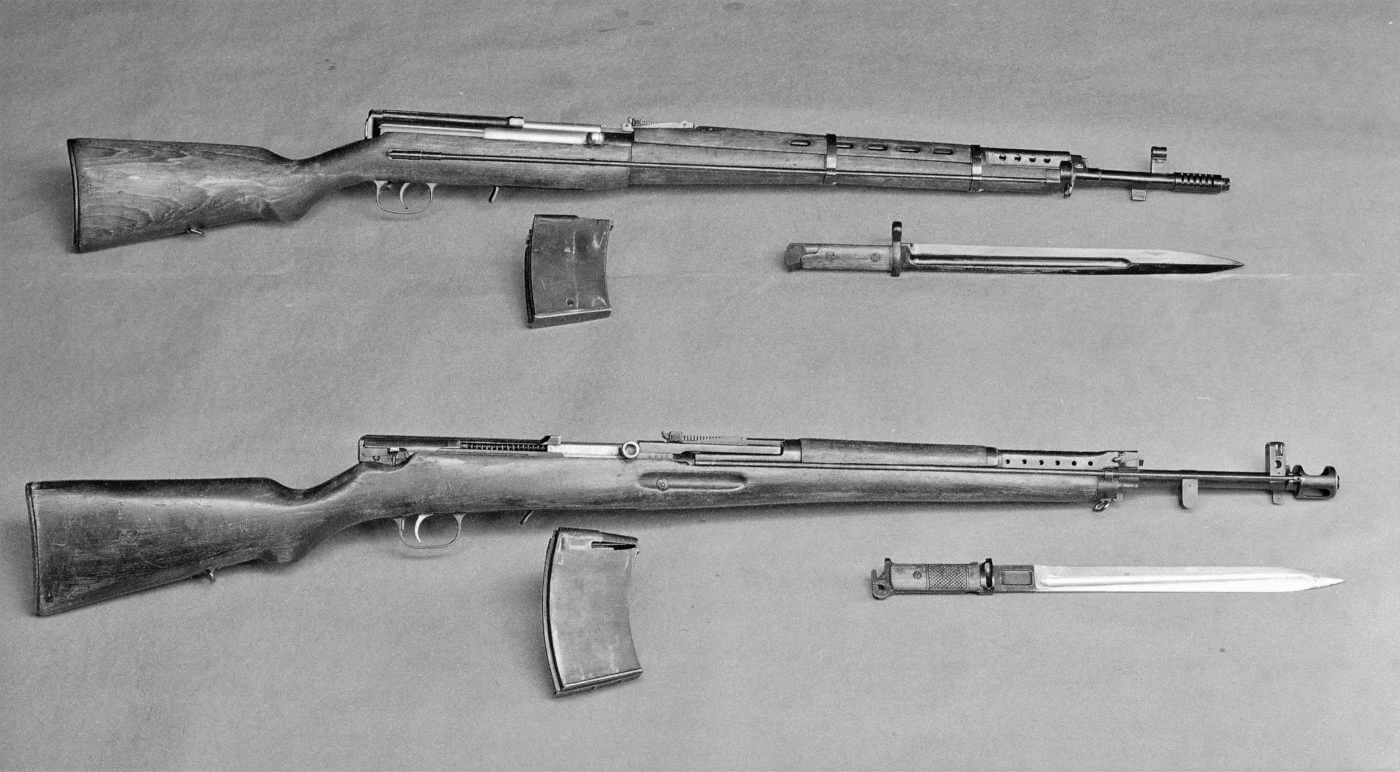
The selective-fire AVS-36 (bottom) with its 15-round magazine. The semi-auto SVT-38 is seen at the top with a 10-round magazine. Both are chambered in 7.62x54mmR.Image: SA-Kuva
As a result, the Red Army adopted the select-fire AVS-36 in 7.62x54mmR in 1936.
The new rifle featured certain modifications to Simonovs original design, most prominently a muzzle brake.
The AVS-36 was first revealed to the public during the May Day Parade in 1938.
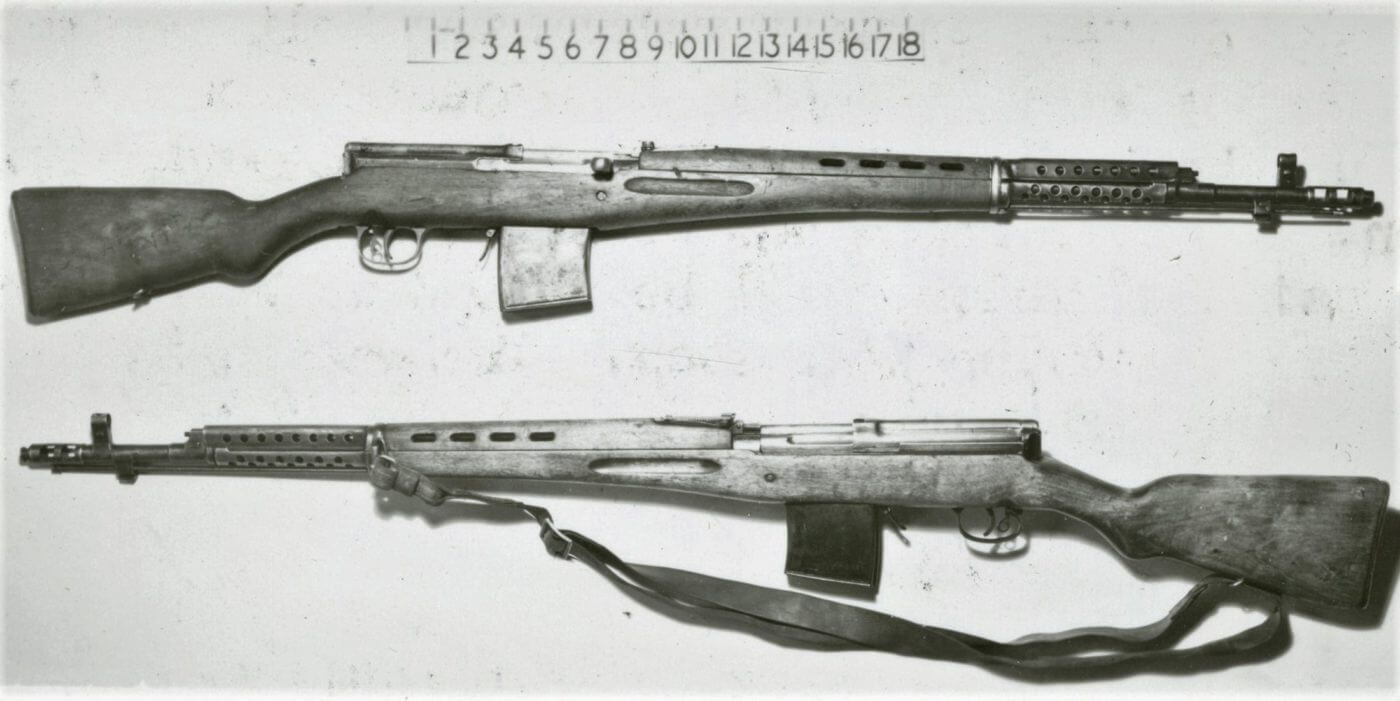
An SVT-40 captured from the Germans on the Western Front and reviewed by U.S. Ordnance in March 1945. Image: NARA
Shape of the Future
John Garand never intended his semi-auto M1 rifle to have full-auto capability.
That would come later, with the development of the M14.
However, Simonovs select-fire AVS-36 is frequently compared against the M1 Garand.
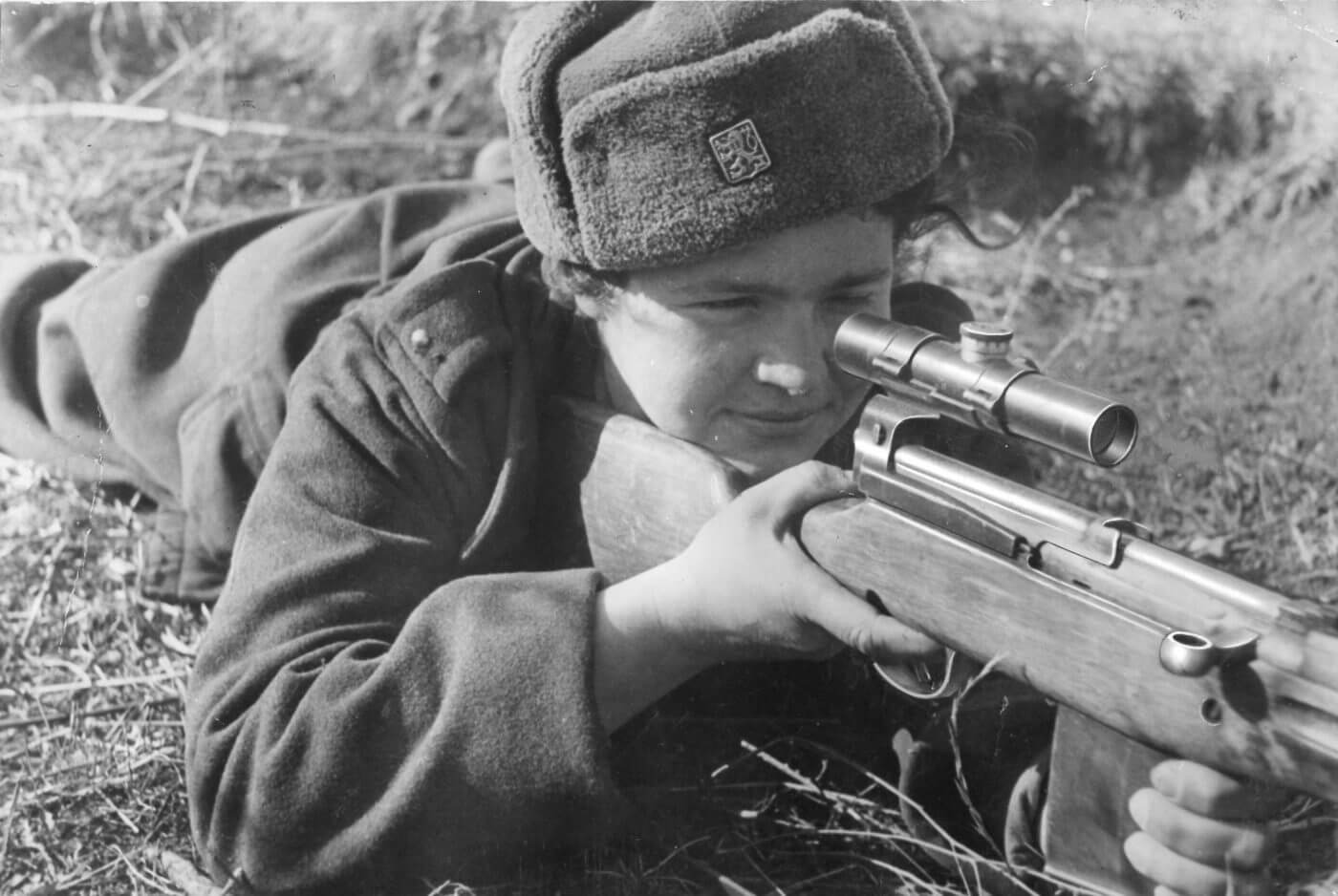
An SVT-40 is shown here fitted out with a Russian PU 3.5x scope. Image: NARA
As a semi-auto rifle, the AVS could be legitimately compared to John Garands robust and enduring design.
Maintenance issues abounded with the AVS-36, and ultimately, these issues were never overcome.
The firing pin of the Simonov rifle was problematic, and all too often it broke within the bolt.
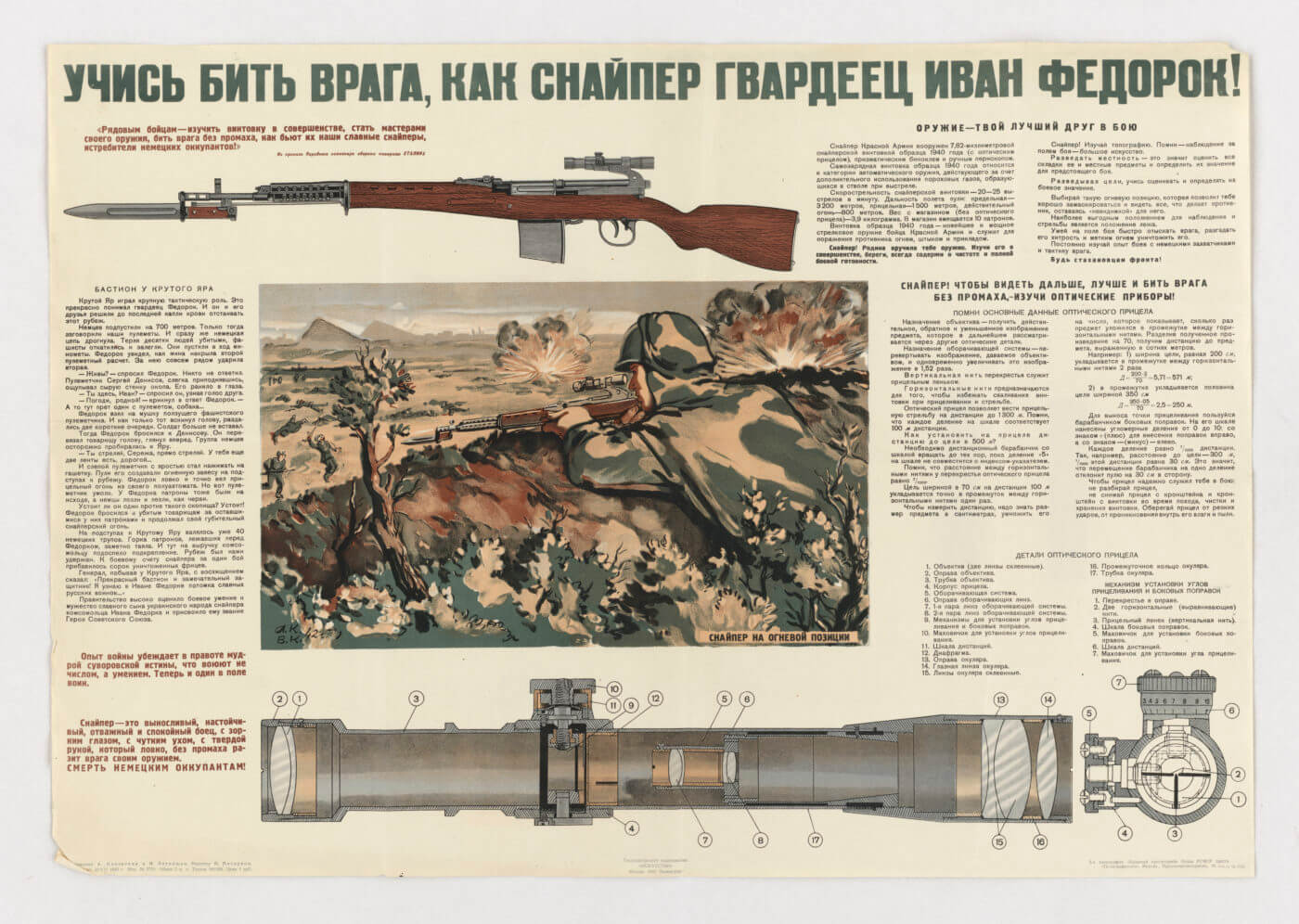
A World War II Soviet recognition and description poster for the SVT-40 rifle. Image: NARA
While Soviet troops never lacked for courage, for many the complexities of the new AVS-36 escaped their understanding.
The rimmed 7.62x54R cartridge caused many problems too, particularly with the AVS 15-round magazine.
In addition, any sustained fire in full-auto would quickly overheat the AVS-36.

The SVT-40 in its sniper role. A little more than 50,000 of the Tokarev rifles were made in this configuration. Image: NARA
There were also few extra magazines available to feed it.
This deficiency plagued all the early Soviet magazine-fed rifles.
His earlier SVT-38 had been used successfully in the 1939-1940 Winter War with Finland.
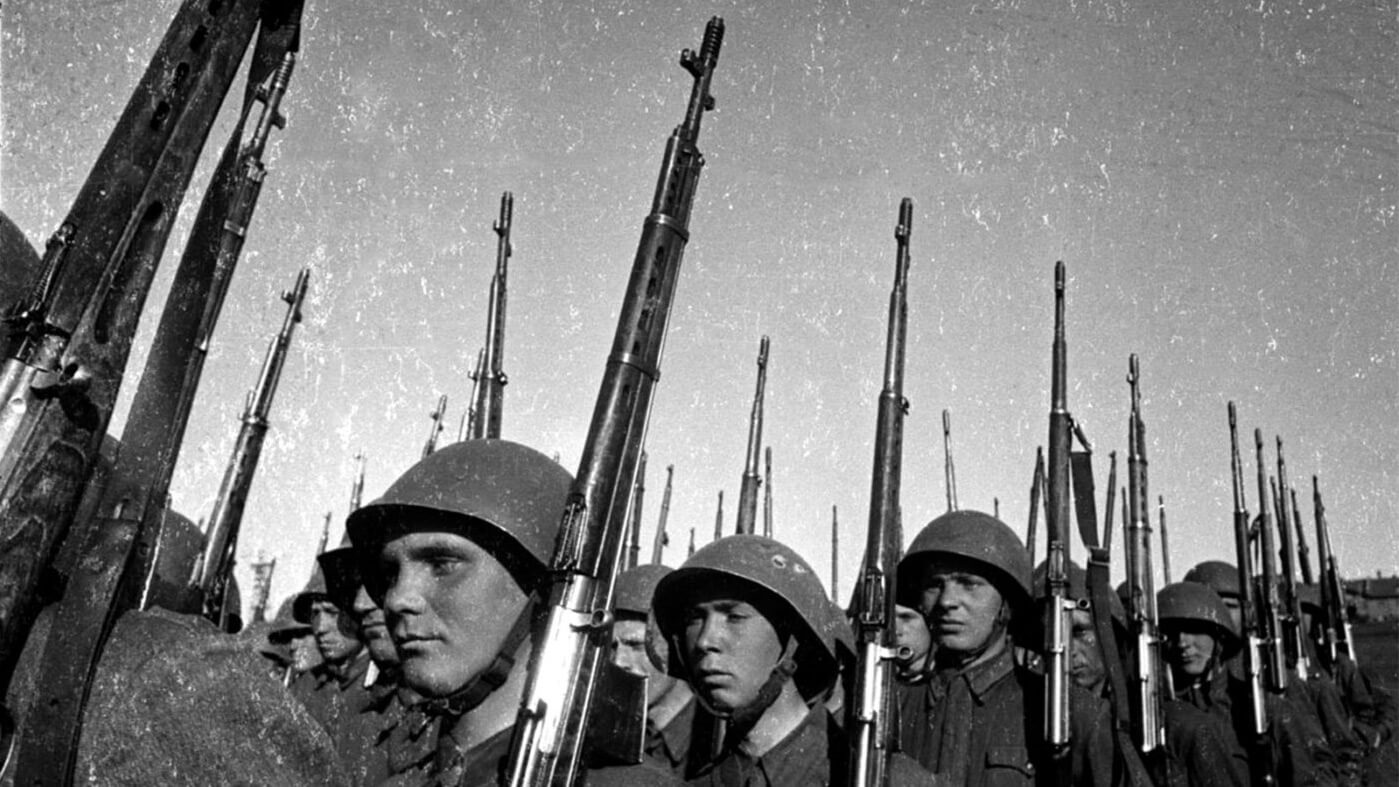
A Soviet infantry unit, fully equipped with Tokarev rifles, seen during the early years of World War II. Image: NARA
The Soviets lost a significant number of SVT-40 rifles during the German invasion beginning in late June 1941.
These were happily taken into German service and given the designation of Selbstladegewehr 259(r).
SVT-40s can be seen in German service through 1943.
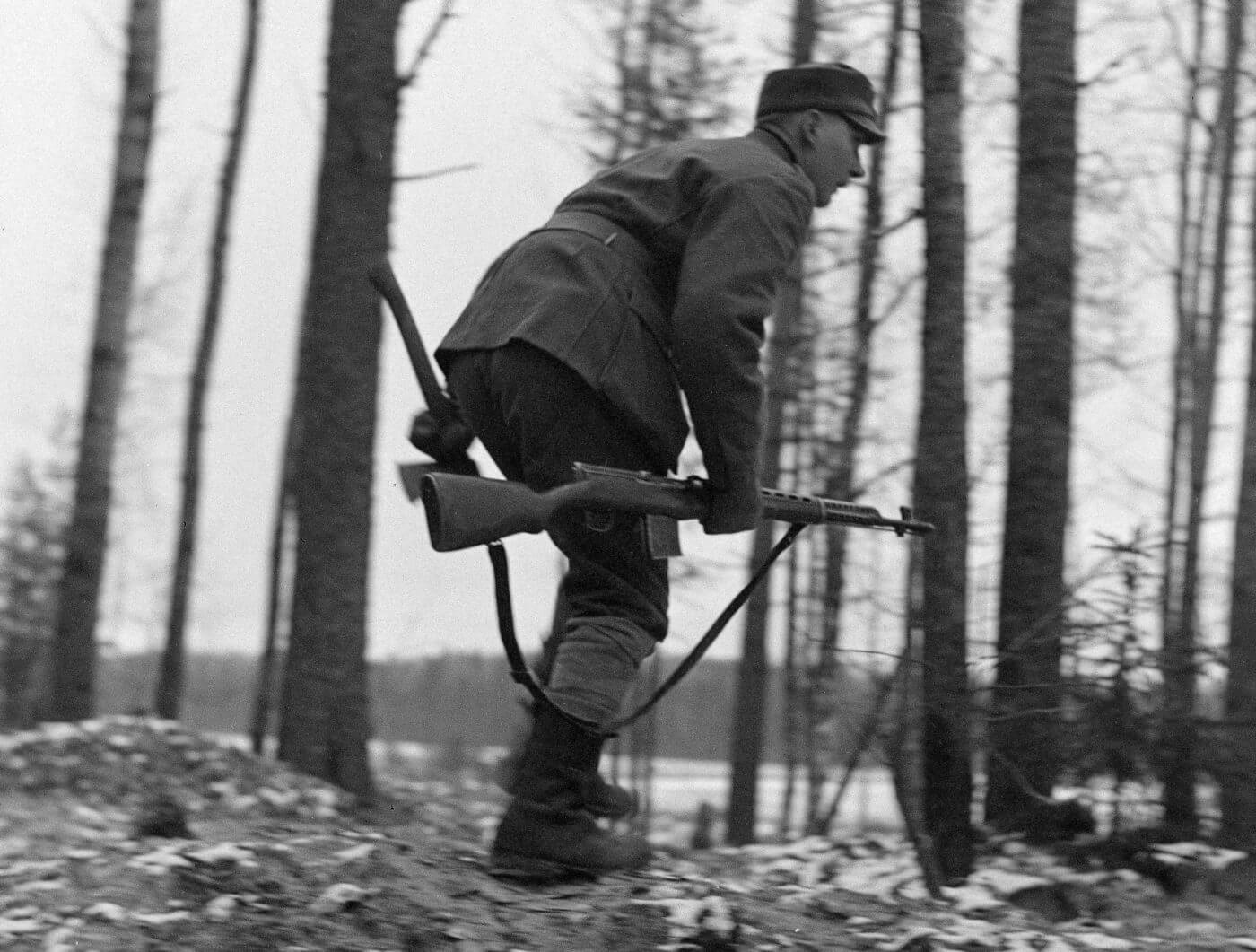
A Finnish soldier with a captured Soviet rifle during the Winter War of 1939-1940.Image: SA-Kuva
Finland also captured many of these rifles and kept them in service until 1958.
Another attempt was made to create a selective-fire rifle using the Tokarev design.
The numbers built were small, and its battlefield performance was terrible.
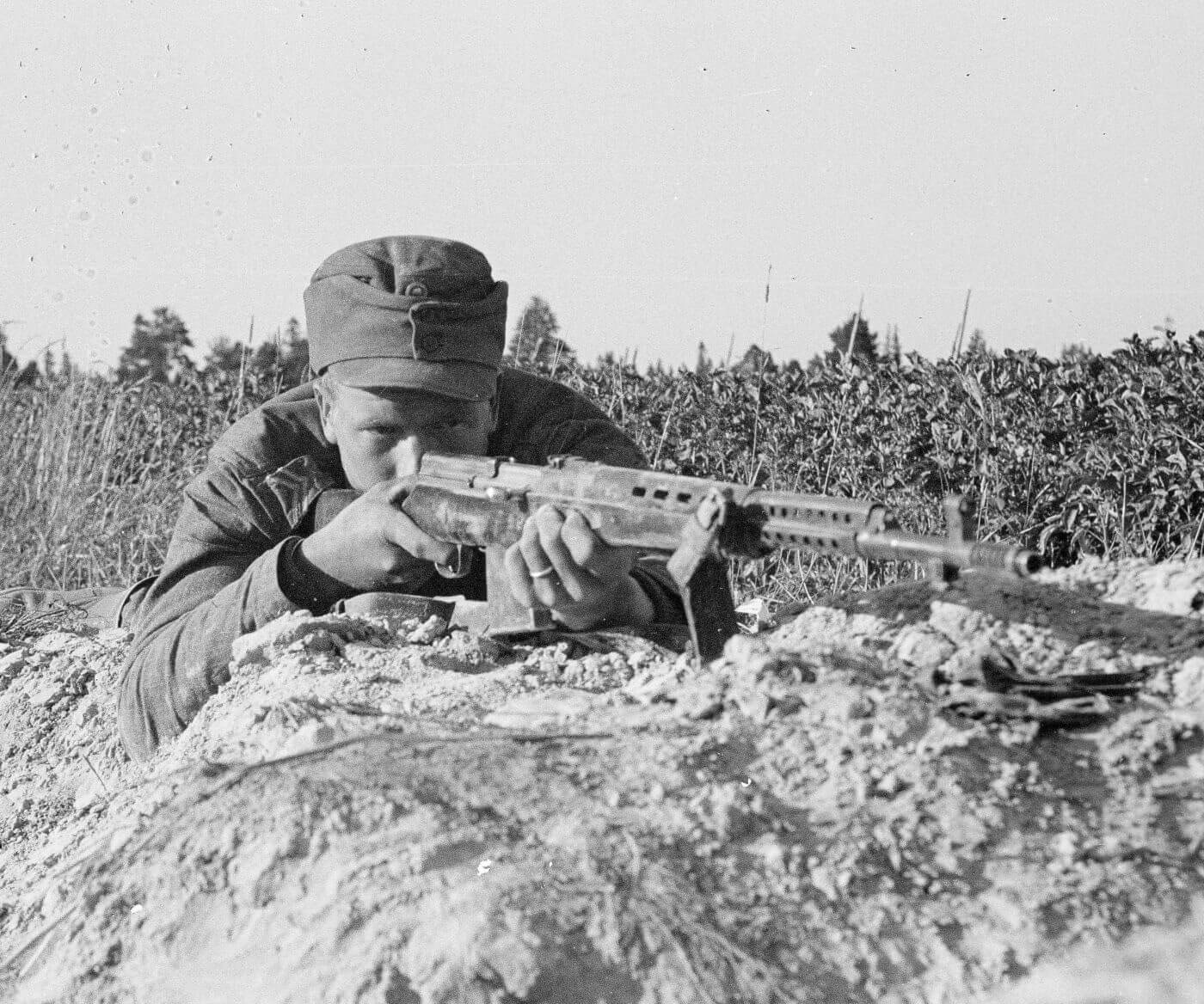
A Finnish marksman with the SVT-40. The Finns used their Tokarev rifles until 1958.Image: SA-Kuva
Ultimately, AVT-40 production was cancelled by the summer of 1943.
Some of this lack of awareness of Soviet arms was rooted in a degree of arrogance.
After winning World War II, U.S.
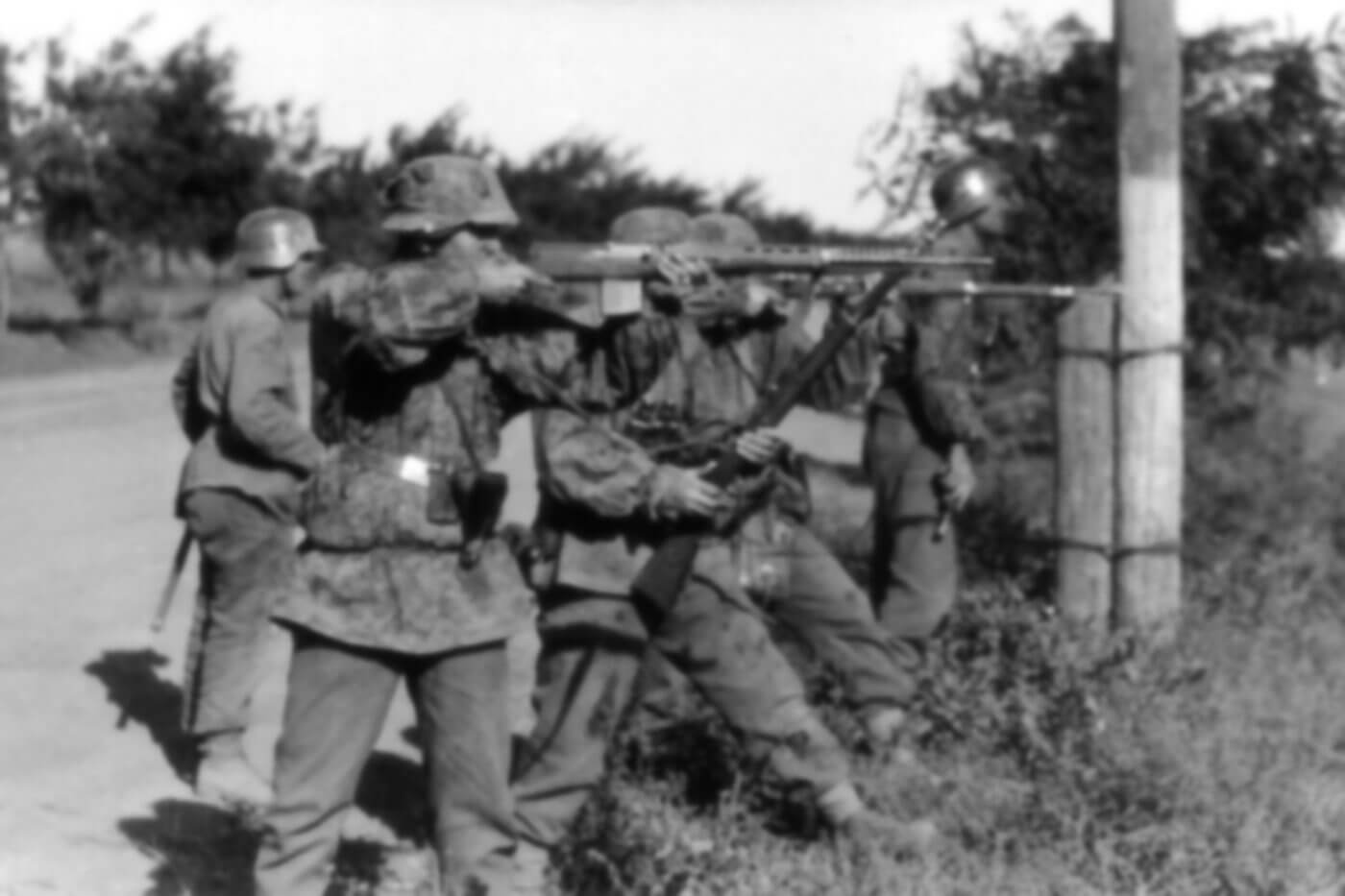
German SS troop with a captured Tokarev rifle during 1943. The Germans used many SVT-40s under the designation “Selbstladegewehr 259(r).” Image: NARA
Ordnance was little concerned with foreign weapons.
The war in Korea was an important slap-in-the-face that awakened U.S. intelligence to investigate Soviet small arms.
Some research on Soviet weapons was done, almost accidentally, in the closing days of World War II.
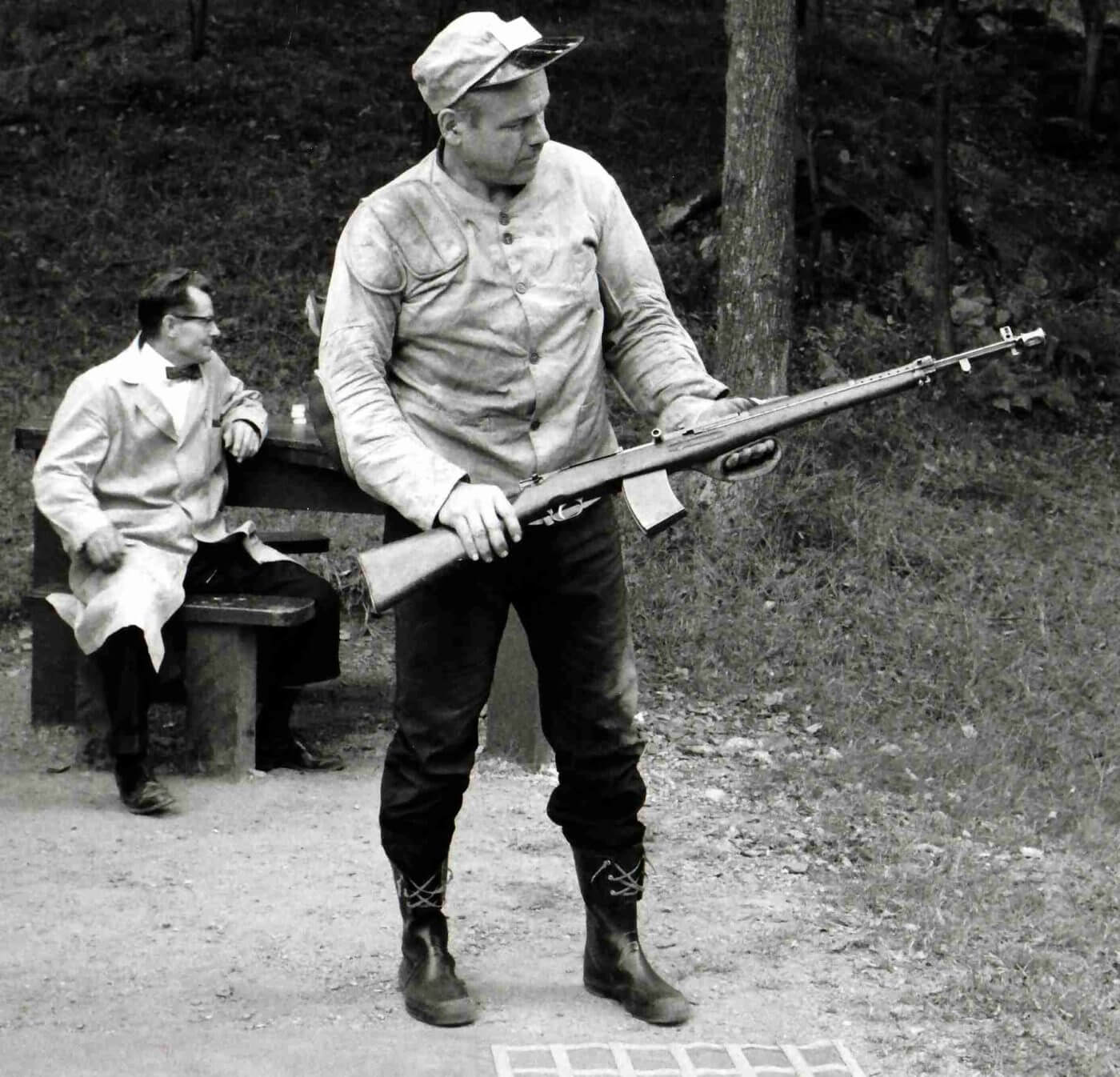
Soviet AVS-36 captured in Korea and tested by the USMC at a range at Quantico, Virginia. Image: USMC Historical Division
The samples captured in Korea show the calculated crudity that is the real secret of Red armament and logistics.
For Russian weapons are a literal reflection of the harsh Asiatic philosophy that life is cheap.
Where men are expendable, so are guns.
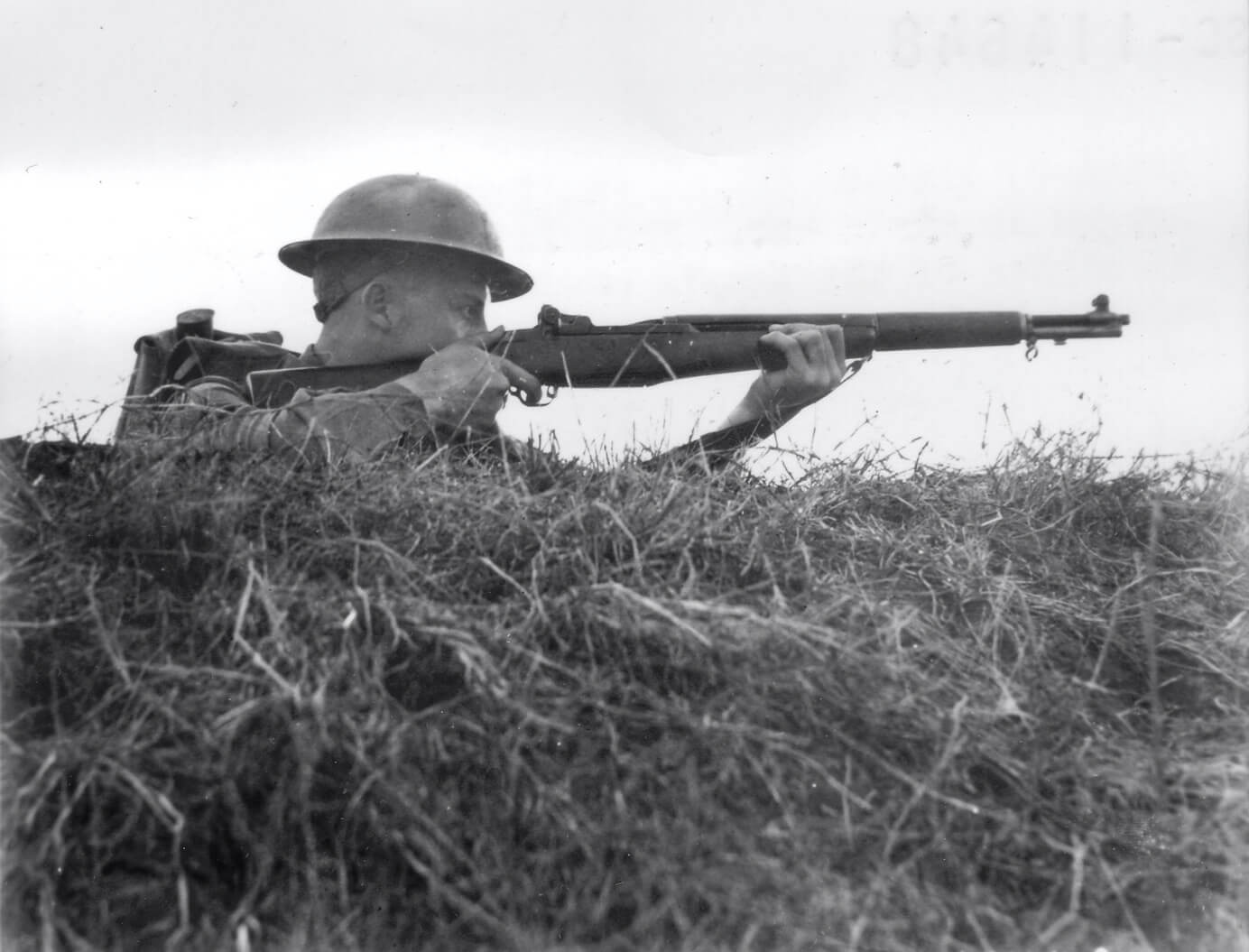
The M1 Garand rifle seen in training at Fort Benning during 1940. Image: NARA
The other one was the Tokarev, Models 1938-40.
So the Russians were a little ahead of us.
Like the Garand, the Tokarev is gas-operated.
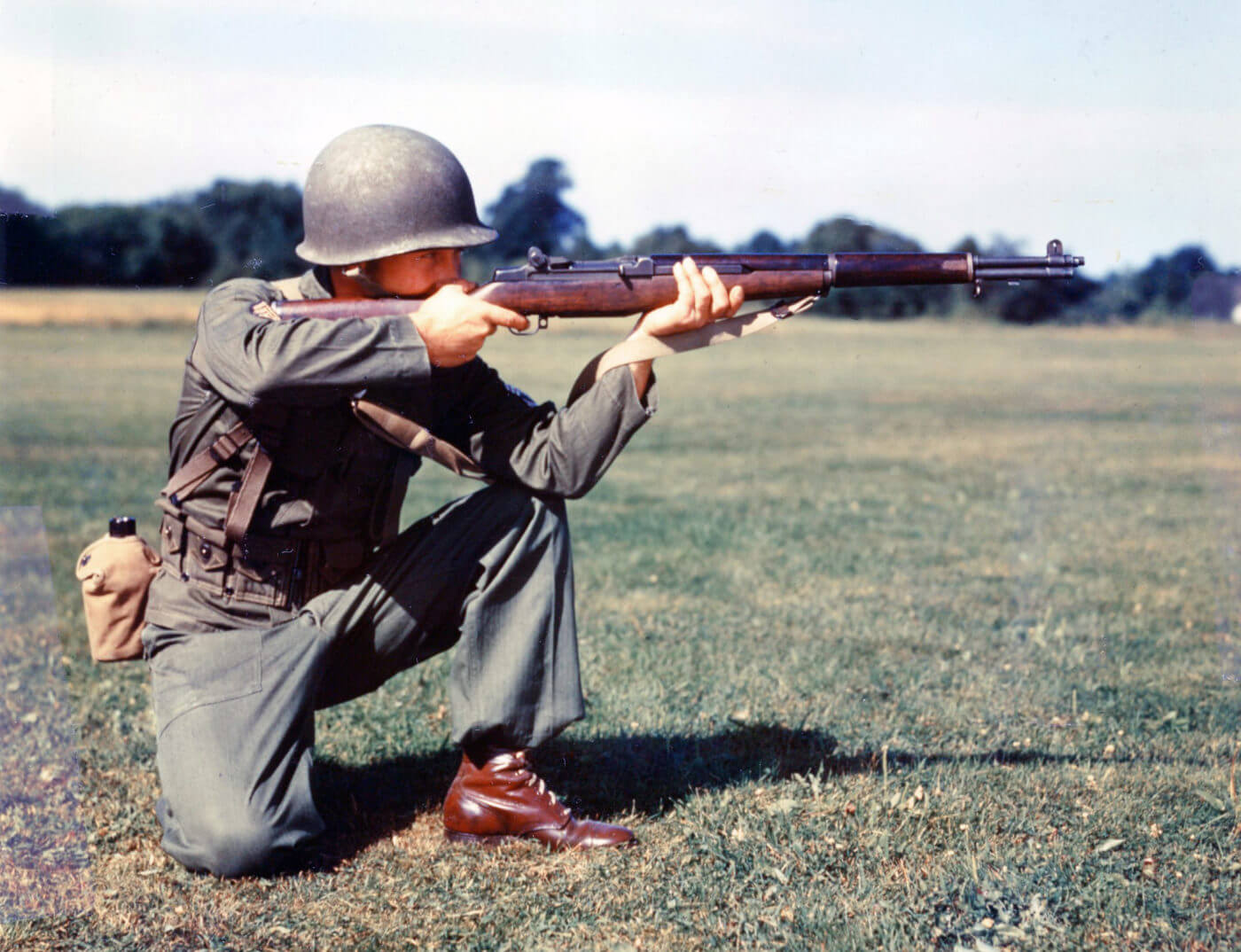
In the post-World War II period, the M1 remained America’s standard battle rifle, having been dubbed “the greatest battle implement ever devised.” Image: NARA
Those who have fired both claim the Tokarev is at least as good as the Garand maybe better.
Certainly the action is visibly simpler in function and manufacture.
It boasts a muzzle brake and carries ten cartridges in the magazine to the Garands eight.
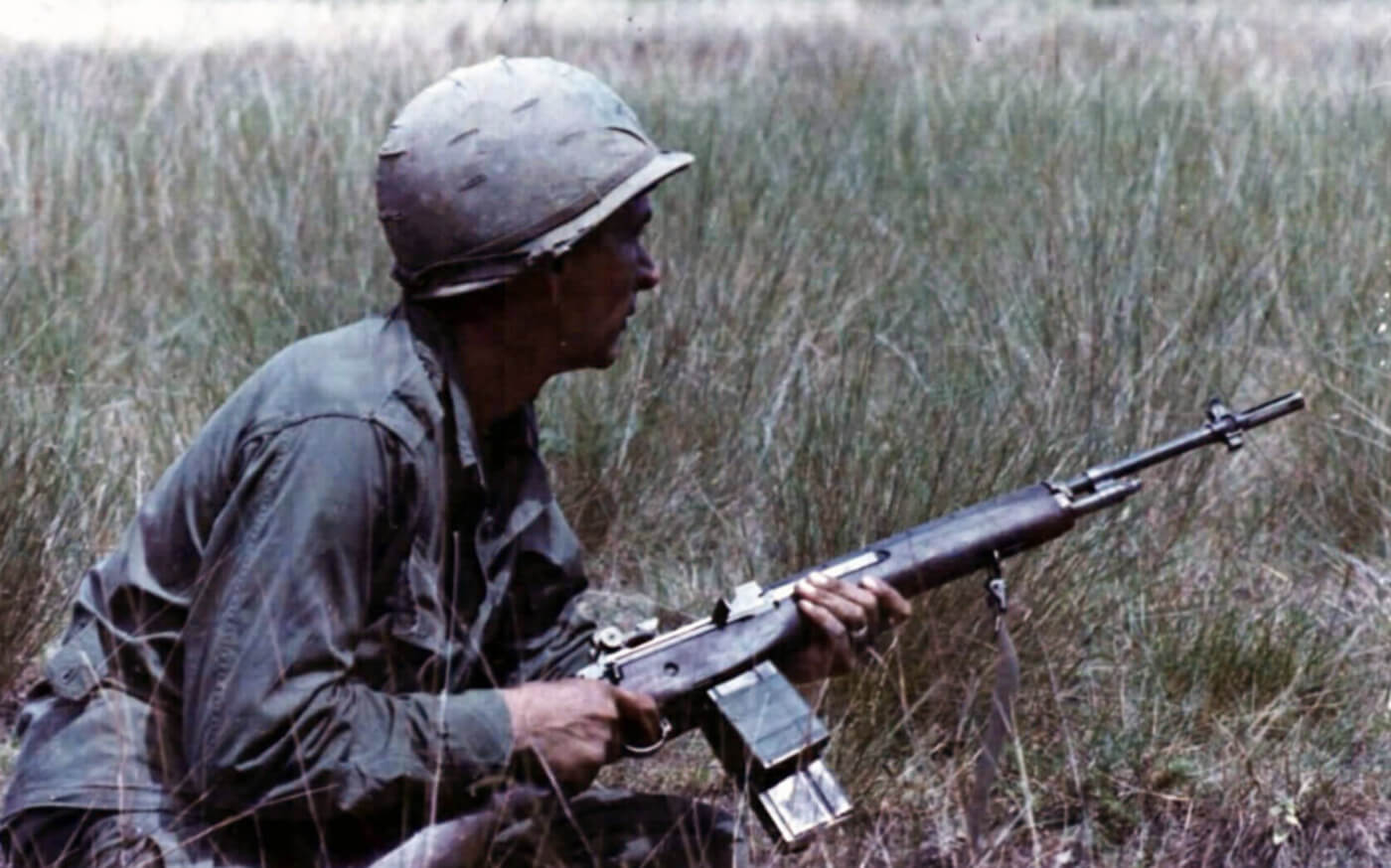
M14 rifleman of the 1st Infantry Division in Vietnam with two 20-round magazines taped together, October 1965. Image: Author’s collection
it feels lighter, and the use of stampings and pressings makes it much cheaper.
it is known to have appeared in its original form as a full-automatic.
And, given lighter construction and longer detachable magazines, it could be a formidable weapon.

Reportedly the fault lay not in the rifles but in Russian ammunition.
Looking Forward… Maybe they sensed something coming or heard rumors of new Soviet rifle development.
I think the battel record can speak for itself.
While the Russian rifles were admittedly revolutionary, they were never adopted broadly in service as was the M1.
But, maybe they deserve a second look?
Go to forum thread




